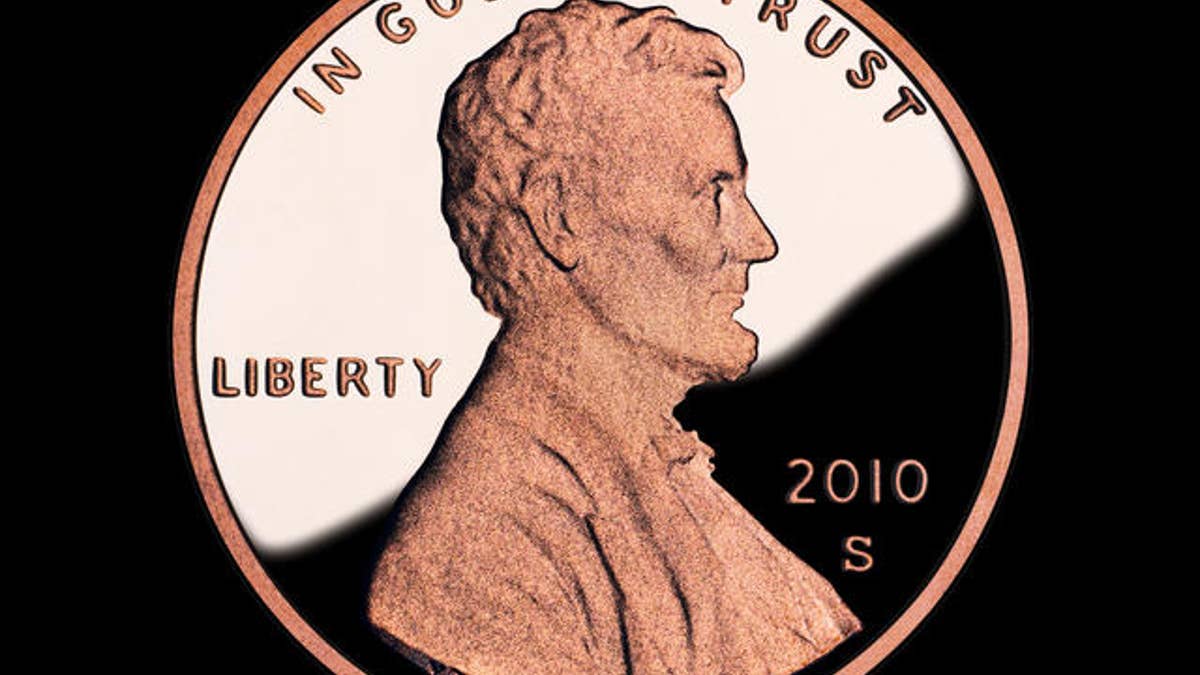
Lincoln one-cent coin.
Most people don't bother to bend over and pick up a penny on the ground.
But the U.S. Mint isn't ignoring pennies these days. In fact, it's considering giving them an overhaul.
The government agency just announced it is seeking public opinion from anyone who has ideas on what'd they'd want in coins made from cheaper metals.
"Making coins from more cost-effective materials could save more than $100 million a year, which isn't just pocket change," a Treasury spokesperson told FoxNews.com.
According to the U.S. Mint, it is looking for public comment on "the factors to be considered in the research and evaluation of potential new metallic coinage materials."
This includes issues ranging from appearance to material used, and "any other factors considered to be appropriate and in the public interest."
While the cost of silver is skyrocketing, the mint is also grappling with ways to cheapen production costs for pennies and their valuable copper content.
In 1909, when the mint issued the first Lincoln penny, it was made with about 95 percent copper. At today's copper prices, the value of the metal in the penny would be 2.5 cents. The value of the copper in pennies minted before 1982 -- when the Mint switched to mostly zinc -- is worth 2.85 cents.
Pennies minted today contain 97.5 percent zinc and 2.5 percent copper. But the cheaper pennies still cost more to manufacture than their face value -- 1.8 cents to make a one-cent coin. But its melt value (what it's worth melted down) is only sixth-tenths of a cent in copper, which currently sells for $4.32 per pound.
If the U.S. were to melt all the estimated pennies in circulation since 1909, it would have almost $7 billion worth of copper.
Concern over the mint's budget has highlighted a long-standing debate about phasing the penny from the currency.
"It's a perennial Treasury issue. The Treasury could save a lot of money by getting rid of them," said Jack Tatom, professor of finance at Indiana State University.
With a projected $1.6 trillion federal deficit this year, finding ways to reduce costs makes getting rid of the penny a tempting idea. But the mint is concerned that if it were to take pennies out of circulation, it could have a profound impact of the overall value of U.S. currency.
In 2006, Mint Director Edmund Moy approved a rule to limit melting coins in order to "safeguard the integrity." According to a 2007 mint press release, "widespread withdrawal of pennies and nickels from circulation could cause coin shortages, and it would be extremely costly to replenish them, given prevailing metal prices and production."
And for those looking at the metallic value in pennies to help bridge someone's personal budget shortfall, beware: federal law makes it illegal to melt U.S. currency.




